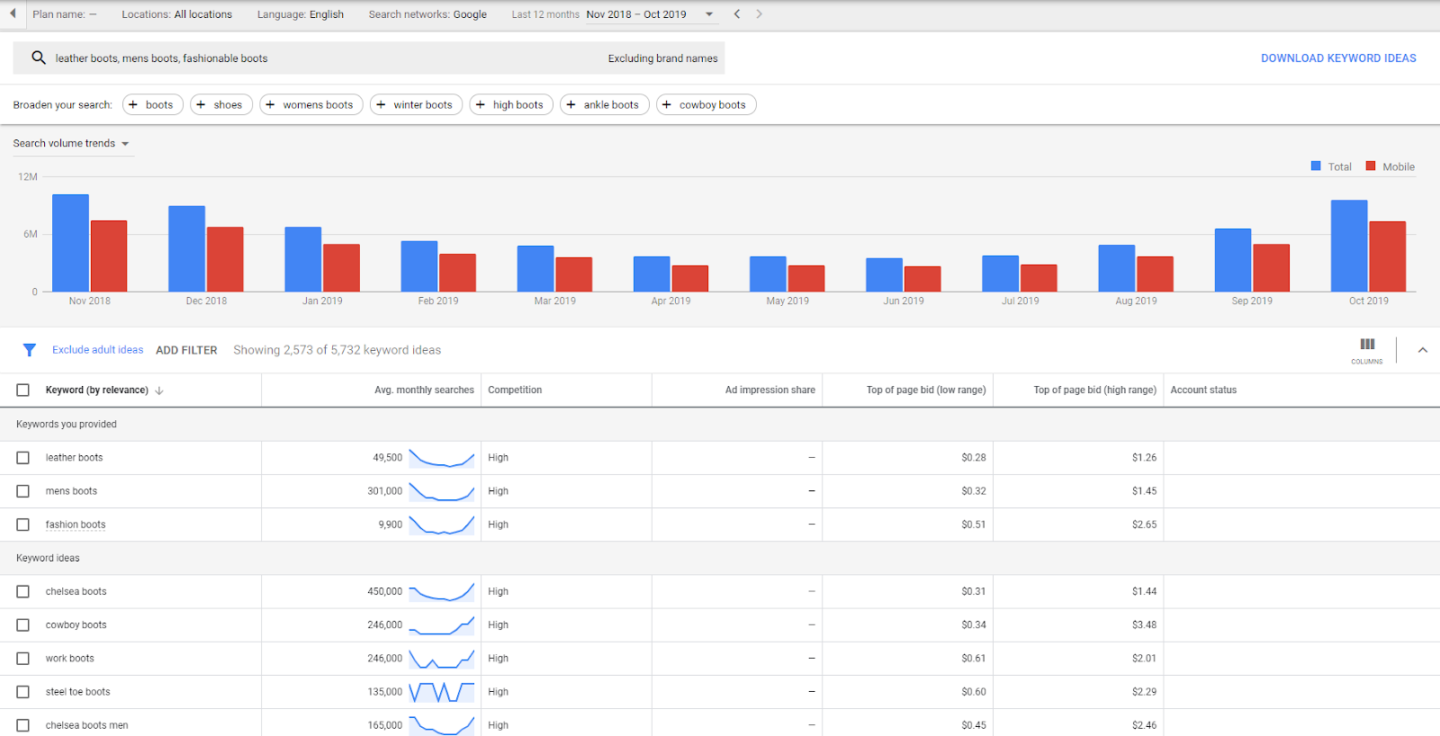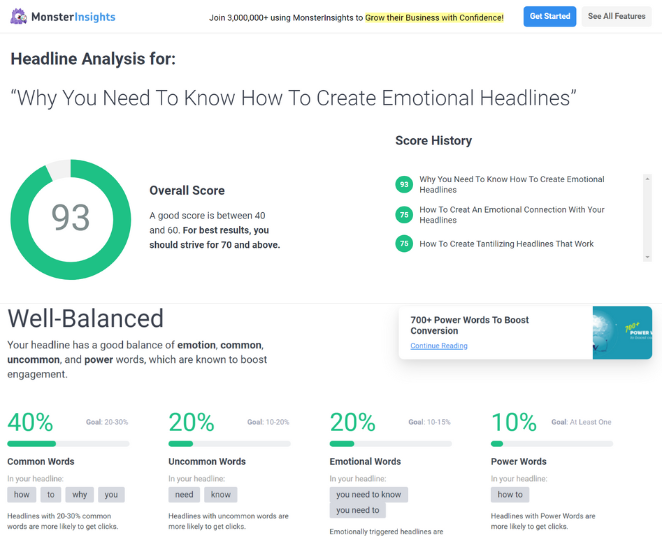Are you considering making content or digital ads a part of your marketing strategy? The headlines can be one of the most important places to start. Search results headlines will persuade users to interact or push them away, and with over 2.3 million Google searches every second your headlines need to stand out from the crowd to get attention.
More than any other part of the content, the headline needs to be effective. It must capture the target audience’s interest, communicate the tone of the content, and convey the brand’s personality to potential customers. Headlines can be matched to buyer intent, meaning they are perfect for targeting consumers who are at the bottom of the funnel.
The headline is the most critical part of the advertisement because 80% of users will only read the headline to decide if they are interested. You only have a limited number of characters to work with, you need to strategically write headlines that attract attention and display value to users.
While there is no clear method for writing great headlines, we’ve created some tips and best practices to guide marketers. In this blog, we will cover our main tips for how to create tantalizing headlines that work.
Strategically Use Keywords
With the help of a compelling headline, your content can stand out from the crowd and establish your business as a thought leader, trustworthy, and valuable to users. Keywords play a major role in your headlines, the words you use need to match user intent and show them that your offerings match the solution they are searching for.
You won’t get viewers to stick around and read what you have to say if your headlines are unclear, obscure, or lack SEO keywords. By utilizing the language and search words the audience uses you give them the confidence of knowing that they are in the right place.
The strategy behind keywords also improves headline relevance and improves quality because you are indicating that your ads are relevant to searches. Make sure your customers know what you sell and include relevant keywords in the headlines to create a link between the client’s search query and your headline.
Keyword Placement
After choosing the keywords you want to emphasize in your headlines, you can write copy that incorporates a mix of the keywords. This allows the organization to create more variations while keeping every headline relevant.
Every ad should have multiple headline variations that explain benefits and value to the reader. The best way to identify what headlines work the best is by conducting an A/B test before launching.
Remote user testing allows you to get real feedback on your headlines before launch, you will be able to ask a panel of dedicated users to compare headlines and identify the ones that are most likely to succeed once content is launched.
Identifying headlines that convert the most users and add value to the content you are publishing will help you get more out of your content.
Matching Headlines to Content and Target Keywords
Powerful headlines are vital to effective content, but if you get the user’s attention with the headline and the rest of the copy and the landing page you bring them to don’t match you will lose the user. A user is often searching for a solution to a problem, a way to achieve a goal, a product or service, or even just to learn something. When you create headlines, think about what you want the user to get out of our content.
The content needs to match the headline and clearly incorporate the keyword you are targeting. If your target market is a hiker, for instance, you can include keywords related to hiking or the outdoors. The user needs to know that you have what they are looking for and can deliver it, don’t create headlines just to get clicks and explain something different once a user clicks to learn more.
The content and headline need to echo the search intent that you want to capitalize on. If you have multiple keywords throughout the content, use the highest-volume keywords in the headline, then use the other keywords naturally throughout the copy and main text.
Keep Headlines Clear and Concise
Intent to learn something new, solve an issue, and intent to engage with your site are all characteristics of users who will click on content. A user that is searching for a lower insurance rate won’t search for “car insurance”. Those searches will give them a long list of blogs, articles, and companies that offer insurance.
That user is much more likely to search for “lowering my insurance rate”, A business that wants to grab their attention should make content that specifically addresses their solution to giving users less expensive insurance.
Searchers are considerably more likely to become customers if the benefits are stated in as few words as possible in the headline. Strong headlines are created by including phrases that are relevant to the search and using language that is direct and to the point.
You have less than 5 seconds to get the attention of the user, this means you need to display value to the user in as few words as possible. If the headline is too specific or long the user will skip your content and move to the headline that is easier to understand.
Be sure that your headlines, copy, and landing page are specific and clearly tell the searcher that they’ve found what they’re looking for.
Make an Emotional Connection
Creating an emotionally charged headline can be a great way to connect with the user and create a reaction. Headlines that incorporate emotional language can drive users to read the content. If the users read a headline and feel so excited about it that they click to learn more, you are using an emotional headline, because it triggers a response and gets the user to click.
Users are more likely to interact with emotional headlines than ones that are neutral, the headline “Best Home Workouts” isn’t necessarily bad, it’s straightforward and simple, people that want a good home workout might be interested. But if it is changed to “The only home workout you will ever need”, it will be much more successful.
When you are crafting headlines you need to find a way to be more engaging, interesting, and stand out from the millions of headlines that appear in search results. Combining your strategic keywords, matching copy to search intent, and creating some emotional connection by using powerful language is a great start to creating effective headlines.
Include a CTA (Call-to-Action)
A headline’s call-to-action is among its most important components. The ultimate goal of any piece of content is to get users to take your desired action. YOur call to action, or CTA, is the section of your headline that instructs the user on what they should do once they click on the headline and arrive on your website or landing page. Whatever that action is, make sure it’s clear in your headline.
Every headline should include action words that make up the call-to-action (CTA). The language you choose for your CTA will depend on the content it is intended to promote, but it’s important to tell users the steps they need to take. CTA’s show users what they need to do to get the benefits you are offering, if you don’t include one the user might be confused or move to the next ad entirely.
Keep in mind that there is no one-size-fits-all method for creating a CTA, the most effective CTAs will depend on the industry, niche, or offering. But, the most effective CTAs use both reasoning and feelings to show users what they need to do to benefit from your business.
Optimizing Headlines With User Testing
Creating and optimizing headlines can be a difficult part of content creation. To find the most effective headlines many large organizations utilize A/B testing. However, A/B testing can come with a large time and money commitment.
For smaller businesses, pre-live user testing can be a great way to find the headlines that work best for your business. Additionally, if a business is struggling to create headlines that incorporate keywords and display value to users, there are several headline optimization tools.
These tools allow you to write user-friendly headlines that drive clicks by tying headlines directly to your keywords and targets. They let SEM marketers optimize their headlines by getting valuable feedback from a human panel of testers.
Testing the headlines in front of real users helps improve CTR and reduce costs, this can all be done – even before going LIVE. With the help of new testing platforms, user testing is reduced from a week-long process to one that takes about an hour. By pairing a headline optimizer tool with rapid user testing, you can create powerful headlines in a few hours.
In headline testing, two headlines are presented in an A/B survey to a panel of testers. Testers vote on their choice and provide an explanation. This real-world feedback allows the SEM marketer to create better headlines that drive more results, even before going live.
Key Takeaways
Tantalizing headlines can be a very effective way to increase conversions, traffic, and lead generation for your website or content. To create the best headlines, you should strategically use keywords, pay attention to keyword placement throughout the copy, match headlines to the content, and target keywords.
Pay attention to the benefits, the ways you address user problems, and the ways you satisfy their needs. Make sure a CTA is present in your headline, let users know what to do next to fix their problem or take advantage of your business’s benefits.
If you are generating ad headlines for the very first time or have expertise with them, remember all of these tips. They might just help you to save time and money. Start paying attention to your headlines, take steps to optimize them, and effectively test them with real users, you will see more clicks, traffic, and conversions.



